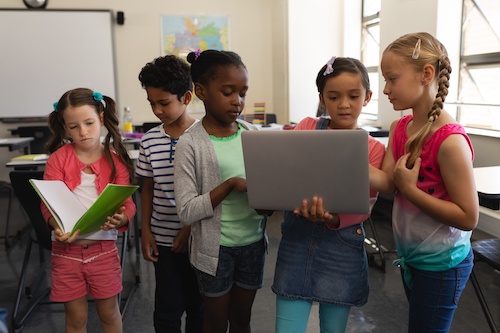Key points:
- Tools and techniques in education foster effective teaching and learning experiences
- Learn about new strategies for teaching tools and techniques
- Stay up to date on the latest in classroom learning trends
Tools and techniques in education encompass a broad spectrum of resources and methodologies utilized to enhance teaching and learning experiences. What are tools and techniques in education? From traditional classroom learning tools like textbooks and whiteboards to innovative techniques such as flipped classrooms and educational software, these resources aim to optimize educational outcomes and engage students effectively.
What are tools and techniques in education?
Tools and techniques in education encompass myriad resources and methodologies essential for effective teaching and learning. Among these teaching tools examples are traditional resources like textbooks, whiteboards, and manipulatives. Textbooks provide structured content aligned with curriculum standards, while whiteboards facilitate visual representation of concepts. Manipulatives, such as counting blocks and science kits, offer hands-on learning experiences that reinforce abstract concepts.
Furthermore, educational technology has become increasingly prevalent in classrooms, with tools like interactive displays, educational software, and online platforms. Interactive displays enable dynamic presentations and engagement, while educational software offers personalized learning experiences and access to a wealth of resources. Online platforms provide opportunities for collaboration, communication, and distance learning, expanding educational horizons beyond the classroom.
In addition to tangible resources, instructional techniques play a crucial role in education. Differentiated instruction, cooperative learning, and inquiry-based learning are among the techniques employed by educators to meet diverse learning needs and foster student engagement. By incorporating a variety of tools and techniques, educators can create dynamic and inclusive learning environments that cater to the individual needs of students and promote academic success.
What are the four kinds of assessment?
Assessment strategies in education encompass various methods used to evaluate student learning and progress. One common type is formative assessment, which occurs during instruction to provide feedback and guide instructional decisions. This ongoing assessment helps teachers gauge student understanding and adjust teaching methods accordingly, fostering continuous improvement.
Summative assessment, on the other hand, evaluates student learning at the end of a unit, semester, or academic year. Examples include standardized tests, final exams, and end-of-course projects, which measure student achievement against predetermined criteria and provide a snapshot of overall learning outcomes.
Another assessment strategy is performance-based assessment, where students demonstrate their knowledge and skills through real-world tasks or projects. This type of assessment encourages critical thinking, problem-solving, and application of learning in authentic contexts, providing a more comprehensive understanding of student abilities.
Finally, self-assessment and peer assessment empower students to reflect on their own learning and provide feedback to their peers. Through self-reflection and peer collaboration, students develop metacognitive skills, communication abilities, and a deeper understanding of their strengths and areas for improvement.
By incorporating these four kinds of assessment strategies—formative, summative, performance-based, and self/peer assessment—educators can gain valuable insights into student learning, promote student engagement, and support overall academic growth and achievement.
What are techniques in education?
Techniques in education encompass a wide range of strategies and methodologies employed by educators to enhance teaching effectiveness and promote student learning. Among these techniques is the utilization of a teaching tools list, which comprises various resources and materials to support instruction.
One essential technique involves differentiated instruction, which tailors teaching methods and materials to meet the diverse learning needs of students. By offering multiple pathways for learning, educators accommodate various learning styles, abilities, and interests within the classroom.
Furthermore, active learning techniques engage students in the learning process through hands-on activities, discussions, and collaborative projects. These interactive experiences promote critical thinking, problem-solving, and deeper understanding of concepts.
Additionally, the incorporation of technology into instruction is a prevalent technique in modern education. Educational software, multimedia presentations, and online resources provide opportunities for interactive learning experiences and personalized instruction.
Moreover, instructional scaffolding is a technique that provides structured support to help students develop new skills or master challenging concepts. By offering guidance and assistance, educators empower students to achieve academic success and build confidence in their abilities.
By utilizing a teaching tools list and incorporating various instructional techniques, educators can create dynamic and engaging learning environments that cater to the diverse needs of students and foster academic growth and achievement.
What are some examples of teaching techniques?
Tools for teaching encompass a wide array of resources and methodologies utilized by educators to enhance instruction and engage students effectively. One example is the use of visual aids such as charts, diagrams, and multimedia presentations to supplement lectures and reinforce key concepts. These visual tools facilitate comprehension and retention of information by appealing to different learning styles.
Another example is the incorporation of hands-on activities and manipulatives, such as math blocks or science kits, which provide tangible experiences to help students grasp abstract concepts and develop problem-solving skills.
Furthermore, technology serves as a valuable tool for teaching, with educational software, interactive whiteboards, and online resources offering opportunities for personalized learning experiences and collaboration.
Moreover, cooperative learning techniques, where students work together in groups to achieve common goals, promote teamwork, communication skills, and peer interaction, fostering a supportive learning environment.
By utilizing diverse tools for teaching, educators can create dynamic and engaging learning experiences that cater to the individual needs of students and promote academic success.
Conclusion
In conclusion, the array of tools and techniques in education serves as vital components in fostering effective teaching and learning experiences. By leveraging diverse resources and methodologies, educators can create dynamic and inclusive environments that cater to the diverse needs of students and promote academic success in today’s educational landscape.
- Classroom Learning - April 5, 2024
- Advantages and Disadvantages of Classroom Management - April 5, 2024
- What are Disadvantages of Classroom Management? - April 5, 2024

